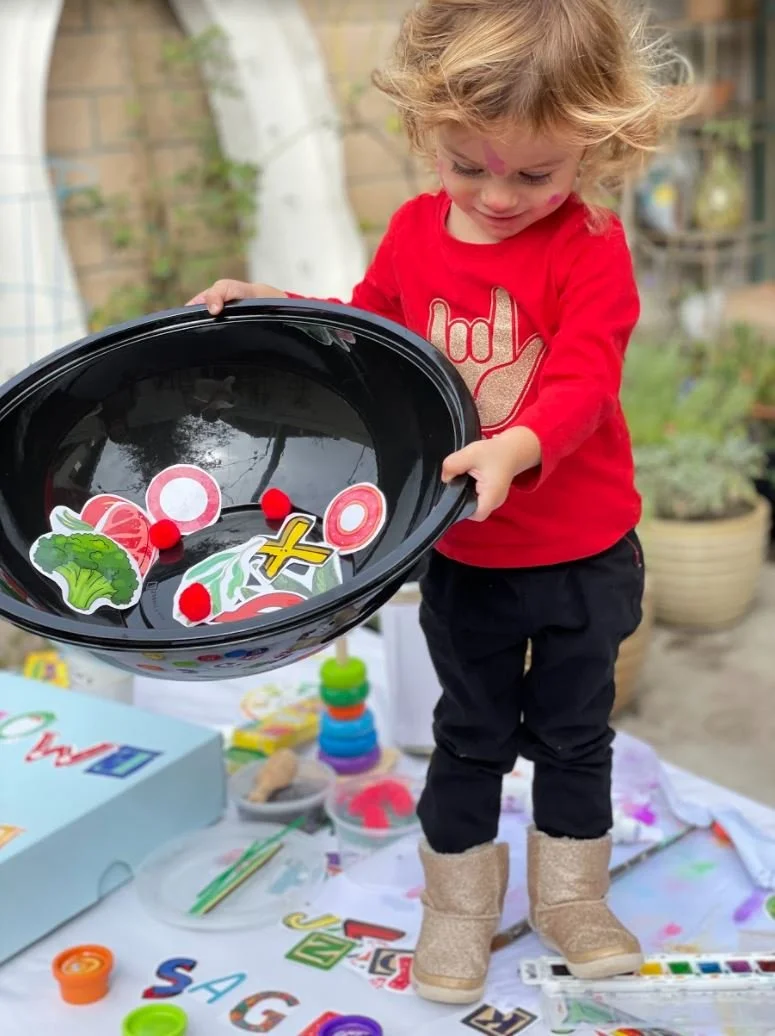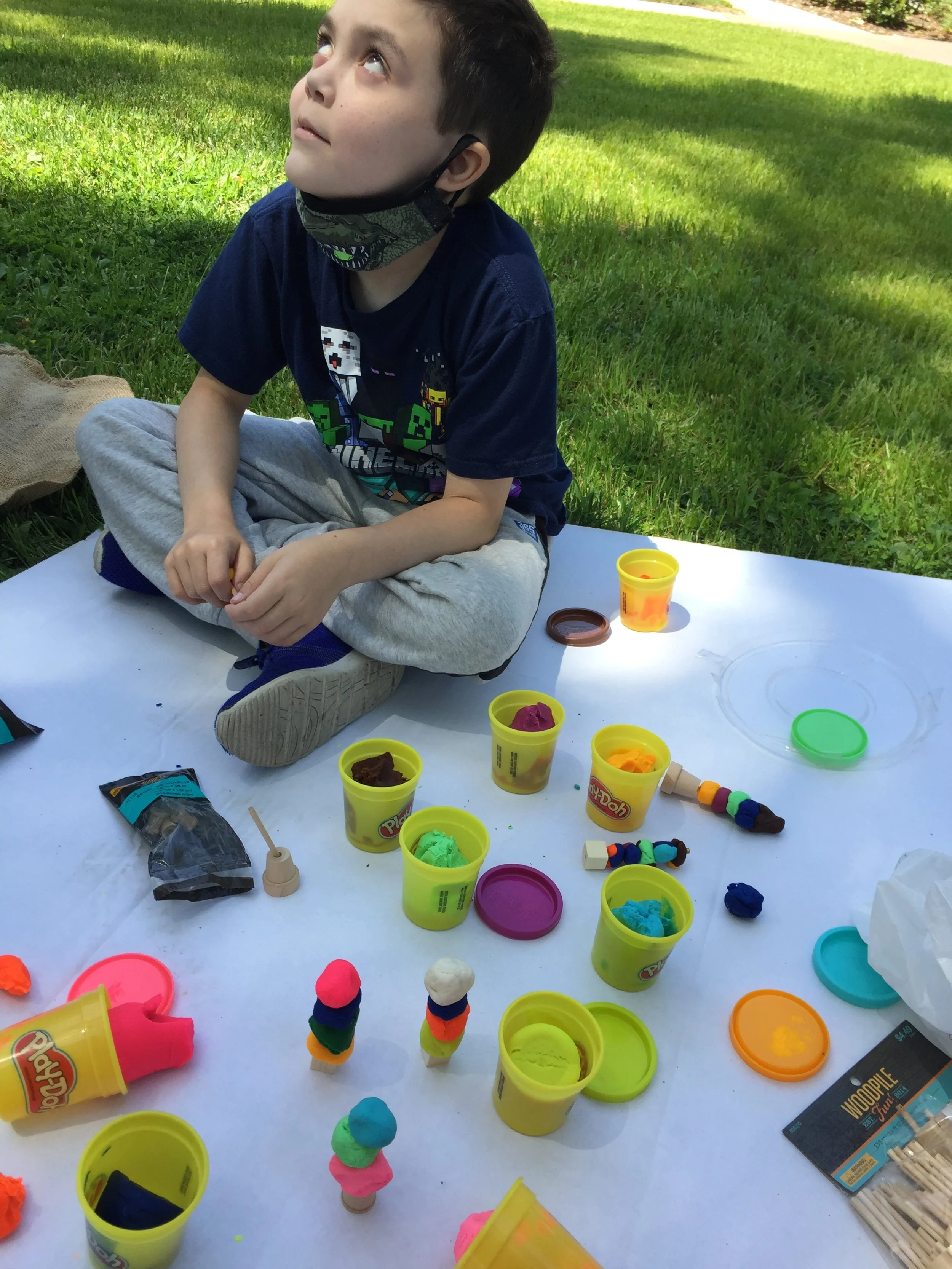Class 1: Giuseppe Arcimboldo’s Fruit Faces
Materials: Crayola products, sliced fruits and veggies, nuts, seeds, images of fruit, mirrors, and paper.
History/Artist: This class will discuss Late Renaissance portraiture, Mannerism as an art style, and Italian artist Giuseppe Arcimboldo’s work.
What can students learn? Students will explore emotions, elements of art, and representation through food imagery.
Class 2: Jay Gruesome’s Monster Art
Materials: Crayola products and paint chip samples.
History/Artist: This class will discuss contemporary artist Jay Gruesome and his Halloween themed artwork.
What can students learn? Students will explore themes of fear and bravery by creating their own monsters.
Class 3: Justina Blakeney’s Leaf Portraits
Materials: Plant based materials, Crayola products, and Play-Doh.
History/Artist: Students will become acquainted with leaf portraiture by contemporary artist and interior decorator Justina Blakeney.
What can students learn? Students will learn how to design portraits based on outdoor elements.
Class 4: Paula Hayes’ Terrarium Art
Materials: Open containers, plant based materials, Crayola products, Play-Doh, and cut out images.
History/Artist: This art lesson will introduce students to contemporary artist Paula Hayes and her sculpture/ mixed media artwork, specifically terrariums.
What can students learn? Students will explore elements of art and mindfulness while learning about terrariums and building their own ecosystems.
Class 5: Andy Warhol’s Soup Cans
Materials: Empty vessels, Crayola products, Play-Doh, and cut out images.
History/Artist: This lesson will introduce students to 20th century Pop Art, specifically Andy Warhol.
What can students learn? Students will explore food preferences and learn about Warhol’s fascination with Campbell’s Soup while designing their own soup cans.
Class 6: Hannah Höch & John Stezaker’s Collage Self-Portraits
Materials: Crayola products, paper, magazine/newspaper clippings, and mirrors.
History/Artist: This lesson will introduce students to collage art, specifically the works of Dada artist Hannah Höch & Conceptual artist John Stezaker.
What can students learn? Students will explore how colors, shapes, textures and patterns have the ability to represent people in collage art.
Class 7: Vincent Van Gogh’s Sunflowers
Materials: Plant based materials, Crayola products, and paper.
History/Artist: Students may already know a little bit about Vincent Van Gogh, but this class will explore his fascination with sunflowers.
What can students learn? Students will learn about the significance of sunflowers in art history while creating their own floral designs.
Class 8: Ugo Rodinone’s Seven Magic Mountains
Materials: Earth based materials, Crayola products, and Play-Doh.
History/Artist: Students will become acquainted with contemporary artist Ugo Rodinone and his mixed media artwork, specifically his installation in Nevada, the Seven Magic Mountains.
What can students learn? Students will learn about large scale land art sculptures and build their own miniature version of the Seven Magic Mountains.
Class 9: Robert Smithson’s Spiral Jetty
Materials: Earth based materials, Crayola products, Play-Doh, and toys.
History/Artist: This lesson will introduce students to Conceptual artist Robert Smithson and his use of land as a medium.
What can students learn? Students will explore their personal relationship with earth while building their own jetty.
Class 10: Ryan Evans’s Cash Art
Materials: Crayola products, paper, and play money
History/Artist: Students will become acquainted with contemporary artist Ryan Evans and his cash collages.
What can students learn? Students will explore cultural money attitudes and learn how to build their own money collages.






